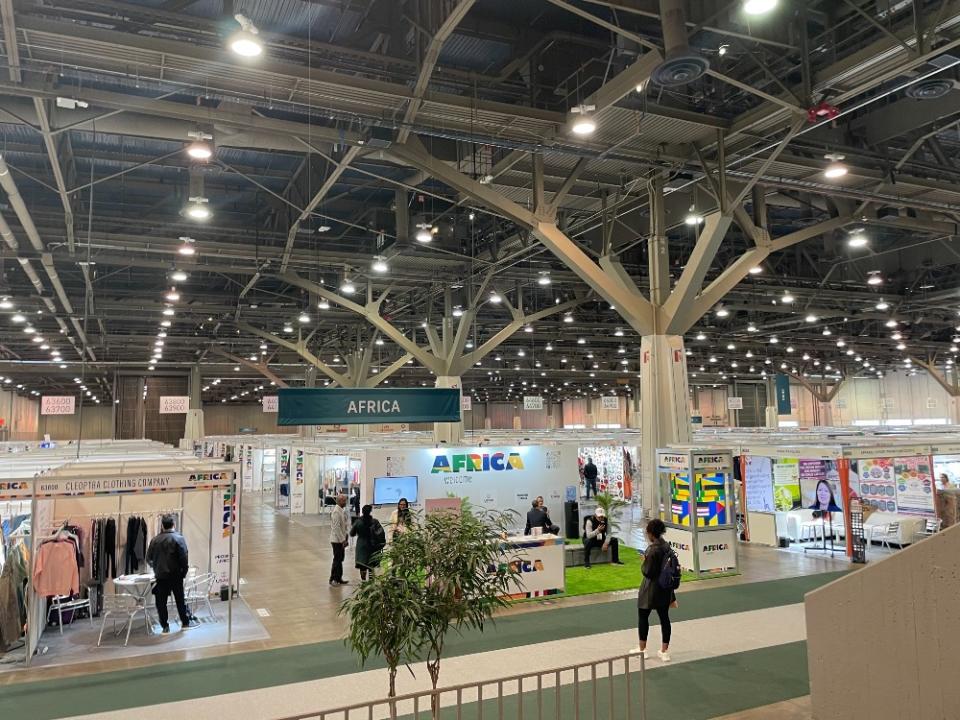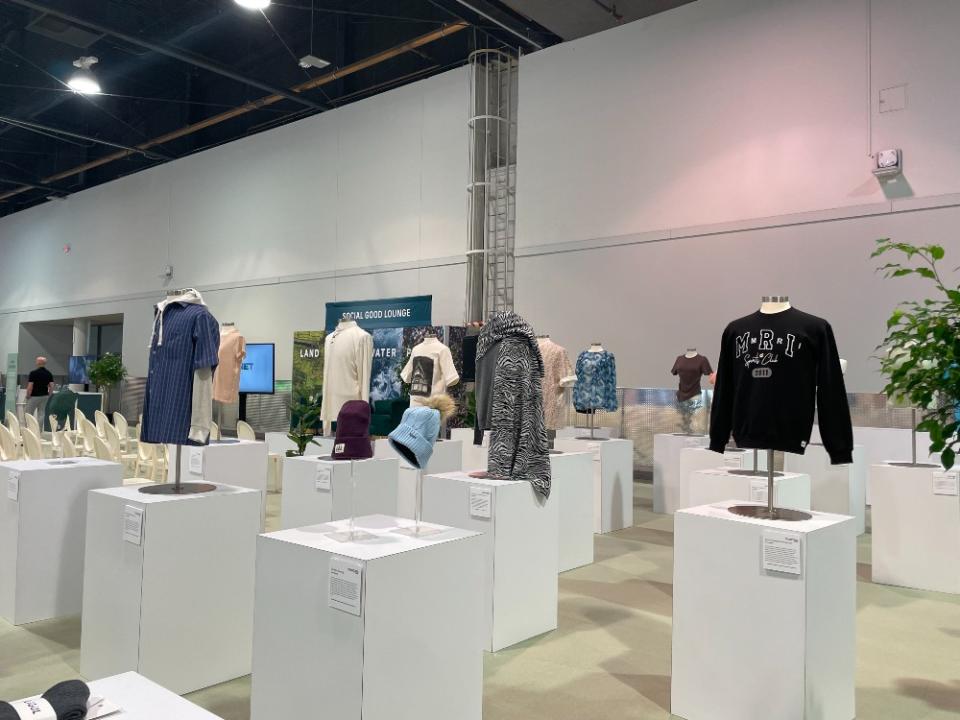African Exhibitors Make Their Mark at Sourcing at Magic

The Sourcing at Magic trade show returned to Las Vegas this month with a spotlight on the continent of Africa.
For the first time in the show’s more than two-decade run, 68 exhibitors from about 35 African nations came together to create the African Textiles and Apparel Pavilion—an effort spearheaded by the U.S. Agency for International Development’s (USAID) Africa Trade and Investment (ATI) program and the government-run Prosper Africa initiative. A presidential national security program, Prosper Africa aims to strengthen strategic and economic partnership between the U.S. and Africa by facilitating two-way trade and investment.
More from Sourcing Journal
Sourcing at Magic: Experts Debate 'Is Polyester Friend or Foe?'
Lenzing's Climate, Forest and Water Action Gets Triple A Score from CDP
The vibrant presence at Sourcing at Magic has been years in the making, according to the show’s president, Andreu David. “It’s been a build up over several shows” dating back to last February, when only about 10 exhibitors from the continent showed up to showcase their wares. “They have very big goals, and we’ve discussed continuing this partnership and growing participation,” he said.

In the lead up to this February’s show, David said the groups needed to identify African manufacturers that were “ready to export” to the U.S. market. Many of the firms represented were accustomed to servicing mostly domestic clients, and some had never done business with U.S. brands.
Moving forward, David said USAID, Prosper Africa and Sourcing at Magic will provide more educational resources for would-be exhibitors about how to showcase their products and how to develop fruitful export relationships. “There are definitely larger corporations in this group” that are accustomed to global business, “But there are a lot more smaller entities that need that help,” he added.
In order to prime show attendees for a new bloc of exhibitors, the partners developed a digital regional guide to Africa. “We spoke about the continent of Africa, all the different countries and their specialties, what they are known for and where they could be good partners,” David said. An exhibitor directory was also released at the show.
Of 972 exhibitors listed on the Sourcing at Magic companion website, 600 listed their country of origin as China, signaling that the country’s dominance in the world of apparel sourcing is far from waning. David said the lifting of travel restrictions in recent seasons has allowed companies from mainland China to return to the show physically, and they have done so in droves. Exhibitors from Bangladesh, Pakistan, Turkey, India, Vietnam and Portugal all showed up in strong numbers as well.
David said he’s seen “a trend toward smaller buys” rather than large purchase orders at the Sourcing show. “There are still remnants of excess inventory” at retail after most brands over-purchased for 2023, he explained. While the industry continues to work through that stock, there might be a bit of “post-traumatic” pull-back on new buys.
The trend toward smaller product runs could also be an indicator that brands and retailers are changing the way they source and leaning into a truly diversified portfolio, he said. Many attendees have expressed that they come to the show to forge relationships in new markets. “They’ll still keep China [as a partner] to be competitive, but there are fashion items and other products that can be bought in smaller volumes and closer to market,” he said. “We’re moving in the direction where collections and assortments are diversified.”
Sourcing at Magic attendees have been so interested in making connections in new sourcing markets that the show implemented a matchmaking program. “It was something that we rolled out for Magic and Project, and for the first time we’re rolling it out here at Sourcing,” he explained.
“Our buyer relations team will send out a questionnaire to our database of buyers and see who’s interested in setting up appointments. The brand will let us know what they’re interested in sourcing, and our team matches the exhibitors to that interest.” The effort aims to eliminate points of friction and prevent attendees from becoming overwhelmed by options.

The show’s Sustainability Gallery, curated and managed by social and environmental analytics group Hey Social Good, also continues to expand. Twenty-seven exhibitors were featured in February’s gallery after having their business practices, operations and certifications verified by Hey Social Good and its founder, Cindy J. Lin, who also spearheaded much of the event’s social and environmental educational panels.
According to David, the group is exploring new ways to highlight verified exhibitors as the demand for verification grows season over season. The opportunity for verification by Hey Social Good has also opened up to brands at Magic and Project in Las Vegas, as well as Magic and Coterie in New York. “It’s a popular element of the show because the exhibitors love the added promotion—it serves as marketing for them” as more buyers seek out sustainable options.
The show’s deepening focus on technology—from AI to fit and design tools, traceability platforms and 3D printing—was apparent at February’s show, with companies like Tukatech, Stratasys, Optitex and QIMA in attendance. According to David, the appetite for such solutions is increasing as companies look to drive efficiency and sustainability compliance. “Now that the ESG regulations in the EU have kicked off—next year is when [companies] have to start showing proof and documentation,” he said. “They need to start bracing for that.”

